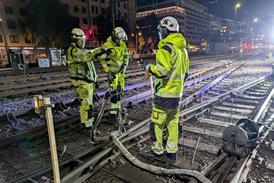New York revises CBTC programme to prioritise reliability over peak-hour capacity
By Metro Report International2022-08-17T08:47:00

USA: New York Metropolitan Transportation Authority is to revise its programme to roll out communications-based train control across the Subway network under proposed amendments to its 2020-24 Capital Plan.
Already have an account? LOG IN
To continue…
You’ve reached your limit of content for the month
Get enhanced access to Railway Gazette news and weekly newsletters.

For almost 200 years, the Railway Gazette Group has been the leading provider of news, analysis and intelligence for the international railway industry. Our independent and authoritative content is read by operators, regulators and the supply industry in over 140 countries using a variety of tailored subscription packages.
Site powered by Webvision Cloud



